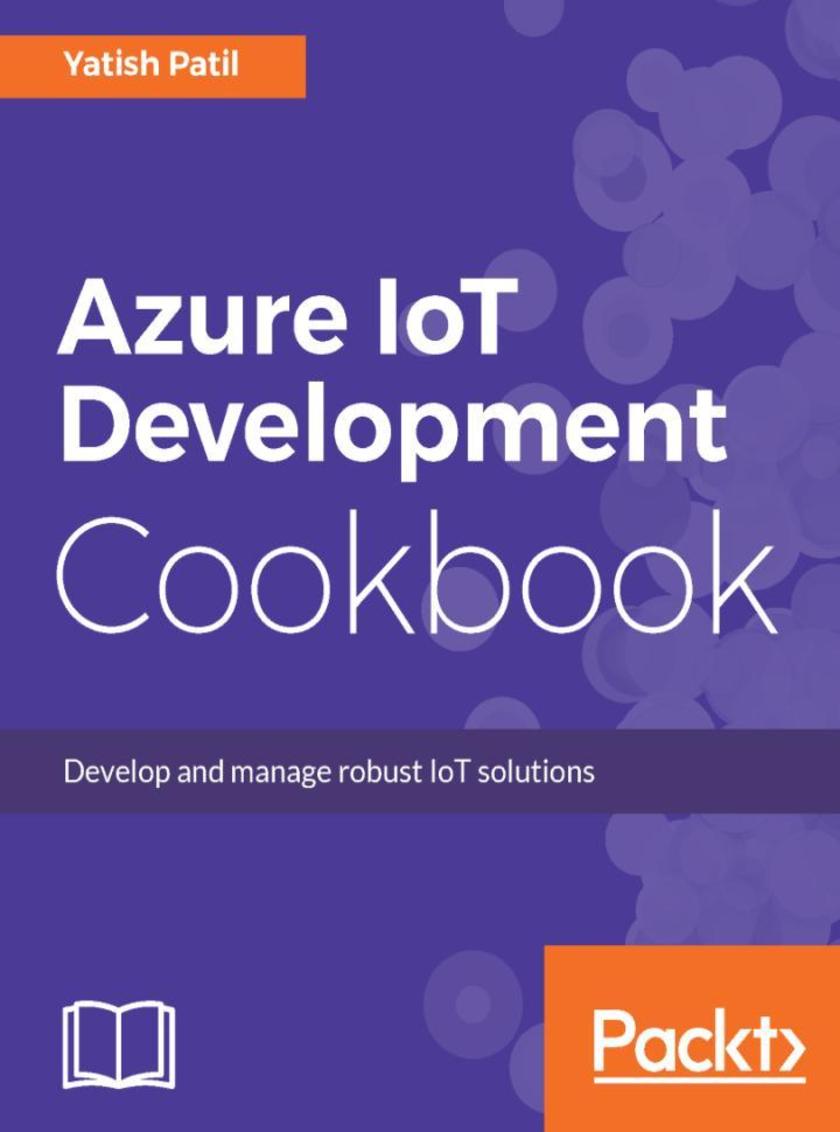
Azure IoT Development Cookbook
¥71.93
Over 50 recipes to drive IoT innovation with Microsoft Azure About This Book ? Build secure and scalable IoT solutions with Azure IoT platform ? Learn techniques to build end to end IoT solutions leveraging the Azure IoT platform ? Filled with practical recipes to help you increase connectivity and automation across IoT devices Who This Book Is For If you are an application developer and want to build robust and secure IoT solution for your organization using Azure IoT, then this book is for you. What You Will Learn ? Build IoT Solutions using Azure IoT & Services ? Learn device configuration and communication protocols ? Understand IoT Suite and Pre-configured solutions ? Manage Secure Device communications ? Understand Device management, alerts ? Introduction with IoT Analytics, reference IoT Architectures ? Reference Architectures from Industry ? Pre-Configured IoT Suite solutions In Detail Microsoft’s end-to-end IoT platform is the most complete IoT offering, empowering enterprises to build and realize value from IoT solutions efficiently. It is important to develop robust and reliable solutions for your organization to leverage IoT services. This book focuses on how to start building custom solutions using the IoT hub or the preconfigured solution of Azure IoT suite. As a developer, you will be taught how to connect multiple devices to the Azure IoT hub, develop, manage the IoT hub service and integrate the hub with cloud. We will be covering REST APIs along with HTTP, MQTT and AMQP protocols. It also helps you learn Pre-Configured IoT Suite solution. Moving ahead we will be covering topics like:-Process device-to-cloud messages and cloud-to-device messages using .Net-Direct methods and device management-Query Language, Azure IoT SDK for .Net-Creating and managing, Securing IoT hub, IoT Suite and many more. We will be using windows 10 IoT core, Visual Studio, universal Windows platform. At the end, we will take you through IoT analytics and provide a demo of connecting real device with Azure IoT. Style and approach A set of exciting recipes of using Microsoft Azure IoT more effectively.
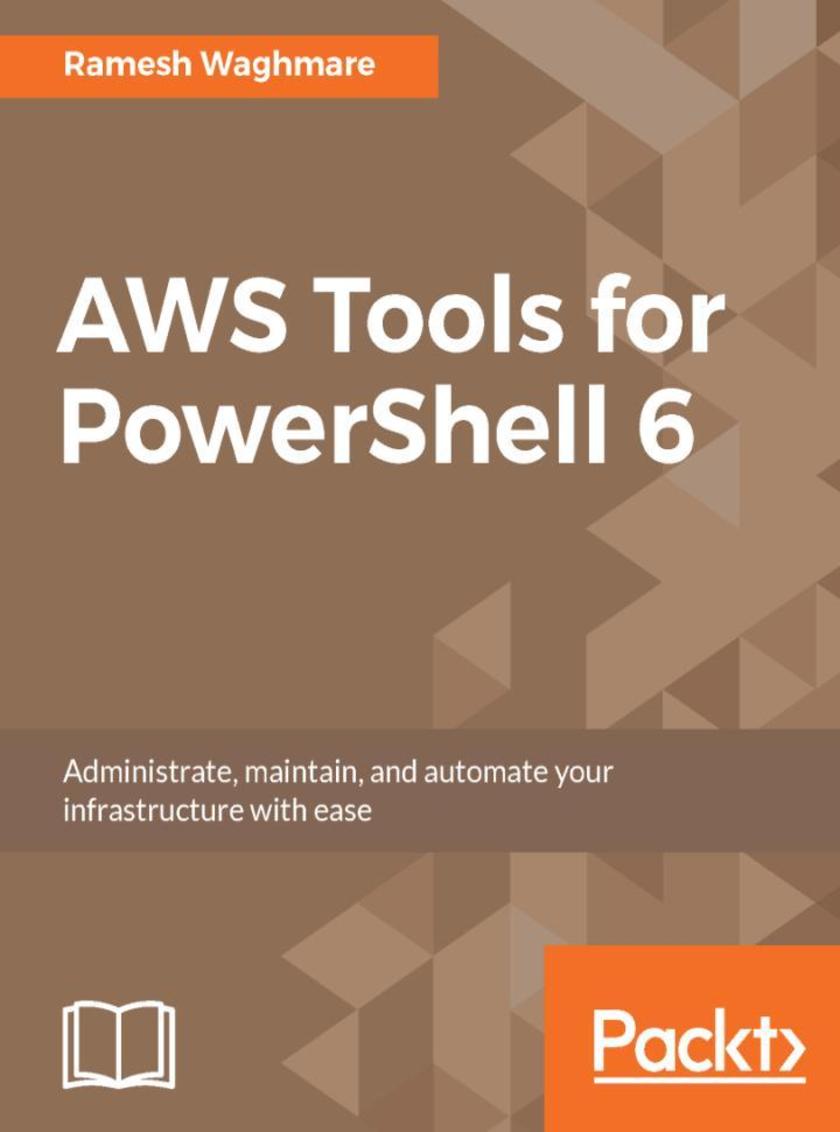
AWS Tools for PowerShell 6
¥80.65
Leverage the power of PowerShell to bring the best out of your AWS infrastructure About This Book ? A collection of real-world-tested Powershell *s that can be used to manage your Windows server efficiently ? Follow step-by-step processes to solve your problems with Windows servers using AWS tools ? Design examples that work in the Amazon free usage tier, which lets you run the Windows platform on cloud Who This Book Is For This book will be useful for (but not limited to) Windows System administrators, cloud engineers, architects, DevOps engineers, and all those who want to accomplish tasks on the AWS Public Cloud using PowerShell. What You Will Learn ? Install the AWS Tools for PowerShell 6 ? Understand key services provided by Amazon Web services (AWS) ? Understand the Virtual Private Cloud ? Use PowerShell 6 for AWS Identity and Access Management (IAM) ? Use PowerShell 6 for AWS Elastic Compute Cloud (EC2) ? Use PowerShell 6 for AWS Simple Storage Service (S3) ? Use PowerShell 6 for AWS Relational Database Service (RDS) ? Build fault-tolerant and highly-available applications using PowerShell 6 In Detail AWS Tools for PowerShell 6 shows you exactly how to automate all the aspects of AWS. You can take advantage of the amazing power of the cloud, yet add powerful *s and mechanisms to perform common tasks faster than ever before. This book expands on the Amazon documentation with real-world, useful examples and production-ready *s to automate all the aspects of your new cloud platform. It will cover topics such as managing Windows with PowerShell, setting up security services, administering database services, and deploying and managing networking. You will also explore advanced topics such as PowerShell authoring techniques, and configuring and managing storage and content delivery. By the end of this book, you will be able to use Amazon Web Services to automate and manage Windows servers. You will also have gained a good understanding of automating the AWS infrastructure using simple coding. Style and approach This step-by-step guide starts with simple examples then expands to full-blown administrative tasks leading to the efficient management of Windows servers. Each topic covers a section related to Amazon Web Services products, and the examples are built on one another to deliver a comprehensive library of *s for administrators.

Windows Forensics Cookbook
¥80.65
Maximize the power of Windows Forensics to perform highly effective forensic investigations About This Book ? Prepare and perform investigations using powerful tools for Windows, ? Collect and validate evidence from suspects and computers and uncover clues that are otherwise difficult ? Packed with powerful recipes to perform highly effective field investigations Who This Book Is For If you are a forensic analyst or incident response professional who wants to perform computer forensics investigations for the Windows platform and expand your took kit, then this book is for you. What You Will Learn ? Understand the challenges of acquiring evidence from Windows systems and overcome them ? Acquire and analyze Windows memory and drive data with modern forensic tools. ? Extract and analyze data from Windows file systems, shadow copies and the registry ? Understand the main Windows system artifacts and learn how to parse data from them using forensic tools ? See a forensic analysis of common web browsers, mailboxes, and instant messenger services ? Discover how Windows 10 differs from previous versions and how to overcome the specific challenges it presents ? Create a graphical timeline and visualize data, which can then be incorporated into the final report ? Troubleshoot issues that arise while performing Windows forensics In Detail Windows Forensics Cookbook provides recipes to overcome forensic challenges and helps you carry out effective investigations easily on a Windows platform. You will begin with a refresher on digital forensics and evidence acquisition, which will help you to understand the challenges faced while acquiring evidence from Windows systems. Next you will learn to acquire Windows memory data and analyze Windows systems with modern forensic tools. We also cover some more in-depth elements of forensic analysis, such as how to analyze data from Windows system artifacts, parse data from the most commonly-used web browsers and email services, and effectively report on digital forensic investigations. You will see how Windows 10 is different from previous versions and how you can overcome the specific challenges it brings. Finally, you will learn to troubleshoot issues that arise while performing digital forensic investigations. By the end of the book, you will be able to carry out forensics investigations efficiently. Style and approach This practical guide filled with hands-on, actionable recipes to detect, capture, and recover digital artifacts and deliver impeccable forensic outcomes.

SQL Server on Linux
¥71.93
Bring the performance and security of SQL Server to Linux About This Book ? Design and administer your SQL Server solution on the open source Linux platform ? Install, configure, and fine-tune your database application for maximum performance ? An easy-to-follow guide teaching you how to implement various SQL Server CTP 2.x offerings on Linux—from installation to administration Who This Book Is For This book is for the Linux users who want to learn SQL Server on their favorite Linux distributions. It is not important if you are experienced database user or a beginner as we are starting from scratch. However, it is recommended that you have basic knowledge about relational models. More advanced readers can pick the chapters of their interest and study specific topics immediately. Users from Windows platform can also benefit from this book to expand their frontiers and become equally efficient on both platforms. What You Will Learn ? Install and set up SQL Server CTP 2.x on Linux ? Create and work with database objects using SQL Server on Linux ? Configure and administer SQL Server on Linux-based systems ? Create and restore database back-ups ? Protect sensitive data using the built-in cryptographic features ? Optimize query execution using indexes ? Improve query execution time by more than 10x using in-memory OLTP ? Track row-versioning using temporal tables In Detail Microsoft's launch of SQL Server on Linux has made SQL Server a truly versatile platform across different operating systems and data-types, both on-premise and on-cloud. This book is your handy guide to setting up and implementing your SQL Server solution on the open source Linux platform. You will start by understanding how SQL Server can be installed on supported and unsupported Linux distributions. Then you will brush up your SQL Server skills by creating and querying database objects and implementing basic administration tasks to support business continuity, including security and performance optimization. This book will also take you beyond the basics and highlight some advanced topics such as in-memory OLTP and temporal tables. By the end of this book, you will be able to recognize and utilize the full potential of setting up an efficient SQL Server database solution in your Linux environment. Style and approach This book follows a step-by-step approach to teach readers the concepts of SQL Server on Linux using the bash command line and SQL programming language trough examples which can easily be adapted and applied in your own solutions.

Odoo 10 Implementation Cookbook
¥99.18
Comprehensive tasks covering Odoo 10 in the right way About This Book ? Reduce implementation costs and improve major benchmarks relating to storage space and speed. ? Implement the approval hierarchy and user and access rights, configure the company and language, and so on. ? Cover all platforms such as mobile, web, content management, and e-commerce. Who This Book Is For This book is targeted towards Odoo functional users and project managers who would like to use it for their organization. No expertise in Odoo is required. What You Will Learn ? Learn the modern way of doing sales and managing sales contracts. ? Create and configure your products and manage your sales quotations ? Set up an online shop and start selling online with Odoo eCommerce ? Manage multi-currency transactions and create a deferred revenue plan and link it with products ? Administer vendors and products and request quotations, confirm orders, and get them delivered ? Manage quality control in the warehouse and manual and real-time inventory stock valuations. ? Manage projects and project forecasting via grid and Gantt views ? Implement Human Resource apps and manage the employee appraisal process ? Manage Workcenters and the product lifecycle ? Track worker activity with tablets and launch new changes in production In Detail Odoo is a Python-based ERP system and is completely open source. Odoo is a comprehensive suite of business applications offering a wealth of functionalities that can be deployed to meet your business needs. This book will help you manage the different functionalities of your business and optimize it. You will learn in detail about the various facets of the business process such as sales, accounting, purchases, manufacturing, and inventory. We will cover each of these topics in detail and learn how Odoo handles all these tasks with much ease. With its modular approach, you will be able to build customized solutions, take advantage of the Odoo 10 system in your organization, and master basic administration. We will cover modules and applications in Odoo that will help optimize quality checks. You will also be able to customize major reporting functions for your teams and set up forms and documents for sales, purchase, inventory, and so on. By the end of the book, you will be able to use the major functionalities of Odoo 10 and fully implement them into your business. Style and approach The book follows a recipe-based format; the recipes are filled with real-world use cases and various functional topics.
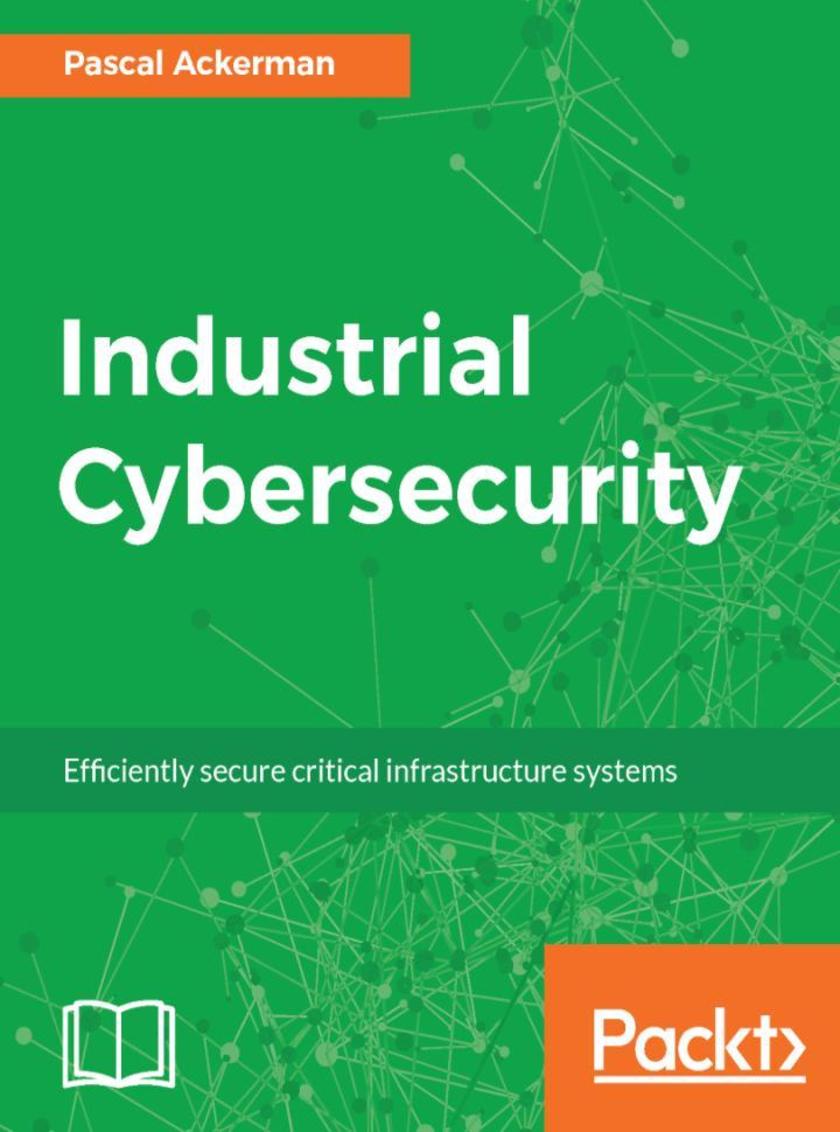
Industrial Cybersecurity
¥80.65
Your one-step guide to understanding industrial cyber security, its control systems, and its operations. About This Book ? Learn about endpoint protection such as anti-malware implementation, updating, monitoring, and sanitizing user workloads and mobile devices ? Filled with practical examples to help you secure critical infrastructure systems efficiently ? A step-by-step guide that will teach you the techniques and methodologies of building robust infrastructure systems Who This Book Is For If you are a security professional and want to ensure a robust environment for critical infrastructure systems, this book is for you. IT professionals interested in getting into the cyber security domain or who are looking at gaining industrial cyber security certifications will also find this book useful. What You Will Learn ? Understand industrial cybersecurity, its control systems and operations ? Design security-oriented architectures, network segmentation, and security support services ? Configure event monitoring systems, anti-malware applications, and endpoint security ? Gain knowledge of ICS risks, threat detection, and access management ? Learn about patch management and life cycle management ? Secure your industrial control systems from design through retirement In Detail With industries expanding, cyber attacks have increased significantly. Understanding your control system’s vulnerabilities and learning techniques to defend critical infrastructure systems from cyber threats is increasingly important. With the help of real-world use cases, this book will teach you the methodologies and security measures necessary to protect critical infrastructure systems and will get you up to speed with identifying unique challenges.Industrial cybersecurity begins by introducing Industrial Control System (ICS) technology, including ICS architectures, communication media, and protocols. This is followed by a presentation on ICS (in) security. After presenting an ICS-related attack scenario, securing of the ICS is discussed, including topics such as network segmentation, defense-in-depth strategies, and protective solutions. Along with practical examples for protecting industrial control systems, this book details security assessments, risk management, and security program development. It also covers essential cybersecurity aspects, such as threat detection and access management. Topics related to endpoint hardening such as monitoring, updating, and anti-malware implementations are also discussed. Style and approach A step-by-step guide to implement Industrial Cyber Security effectively.

Augmented Reality for Developers
¥90.46
Build exciting AR applications on mobile and wearable devices with Unity 3D, Vuforia, ARToolKit, Microsoft Mixed Reality HoloLens, Apple ARKit, and Google ARCore About This Book ? Create unique AR applications from scratch, from beginning to end, with step-by-step tutorials ? Use Unity 3D to efficiently create AR apps for Android, iOS, and Windows platforms ? Use Vuforia, ARTookKit, Windows Mixed Reality, and Apple ARKit to build AR projects for a variety of markets ? Learn best practices in AR user experience, software design patterns, and 3D graphics Who This Book Is For The ideal target audience for this book is developers who have some experience in mobile development, either Android or iOS. Some broad web development experience would also be beneficial. What You Will Learn ? Build Augmented Reality applications through a step-by-step, tutorial-style project approach ? Use the Unity 3D game engine with the Vuforia AR platform, open source ARToolKit, Microsoft's Mixed Reality Toolkit, Apple ARKit, and Google ARCore, via the C# programming language ? Implement practical demo applications of AR including education, games, business marketing, and industrial training ? Employ a variety of AR recognition modes, including target images, markers, objects, and spatial mapping ? Target a variety of AR devices including phones, tablets, and wearable smartglasses, for Android, iOS, and Windows HoloLens ? Develop expertise with Unity 3D graphics, UIs, physics, and event systems ? Explore and utilize AR best practices and software design patterns In Detail Augmented Reality brings with it a set of challenges that are unseen and unheard of for traditional web and mobile developers. This book is your gateway to Augmented Reality development—not a theoretical showpiece for your bookshelf, but a handbook you will keep by your desk while coding and architecting your first AR app and for years to come. The book opens with an introduction to Augmented Reality, including markets, technologies, and development tools. You will begin by setting up your development machine for Android, iOS, and Windows development, learning the basics of using Unity and the Vuforia AR platform as well as the open source ARToolKit and Microsoft Mixed Reality Toolkit. You will also receive an introduction to Apple's ARKit and Google's ARCore! You will then focus on building AR applications, exploring a variety of recognition targeting methods. You will go through multiple complete projects illustrating key market sectors including business marketing, education, industrial training, and gaming. By the end of the book, you will have gained the necessary knowledge to make quality content appropriate for a range of AR devices, platforms, and intended uses. Style and approach This book adopts a practical, step-by-step, tutorial-style approach. The design principles and methodology will be explained by creating different modules of the AR app.
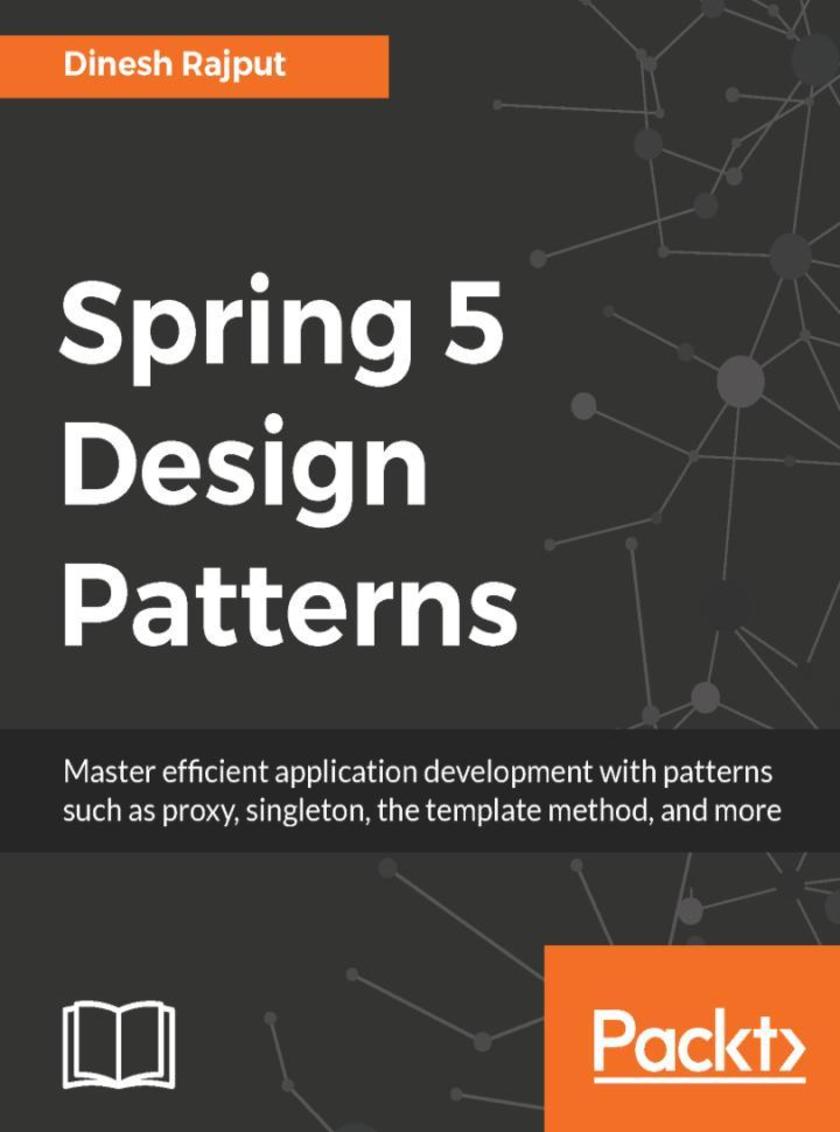
Spring 5 Design Patterns
¥80.65
Learn various design patterns and best practices in Spring 5 and use them to solve common design problems. About This Book ? Explore best practices for designing an application ? Manage your code easily with Spring's Dependency Injection pattern ? Understand the benefits that the right design patterns can offer your toolkit Who This Book Is For This book is for developers who would like to use design patterns to address common problems while designing an app using the Spring Framework and Reactive Programming approach. A basic knowledge of the Spring Framework and Java is assumed. What You Will Learn ? Develop applications using dependency injection patterns ? Learn best practices to design enterprise applications ? Explore Aspect-Oriented Programming relating to transactions, security, and caching. ? Build web applications using traditional Spring MVC patterns ? Learn to configure Spring using XML, annotations, and Java. ? Implement caching to improve application performance. ? Understand concurrency and handle multiple connections inside a web server. ? Utilizing Reactive Programming Pattern to build Reactive web applications. In Detail Design patterns help speed up the development process by offering well tested and proven solutions to common problems. These patterns coupled with the Spring framework offer tremendous improvements in the development process. The book begins with an overview of Spring Framework 5.0 and design patterns. You will understand the Dependency Injection pattern, which is the main principle behind the decoupling process that Spring performs, thus making it easier to manage your code. You will learn how GoF patterns can be used in Application Design. You will then learn to use Proxy patterns in Aspect Oriented Programming and remoting. Moving on, you will understand the JDBC template patterns and their use in abstracting database access. Then, you will be introduced to MVC patterns to build Reactive web applications. Finally, you will move on to more advanced topics such as Reactive streams and Concurrency. At the end of this book, you will be well equipped to develop efficient enterprise applications using Spring 5 with common design patterns Style and approach The book takes a pragmatic approach, showing various design patterns and best-practice considerations, including the Reactive programming approach with the Spring 5 Framework and ways to solve common development and design problems for enterprise applications.
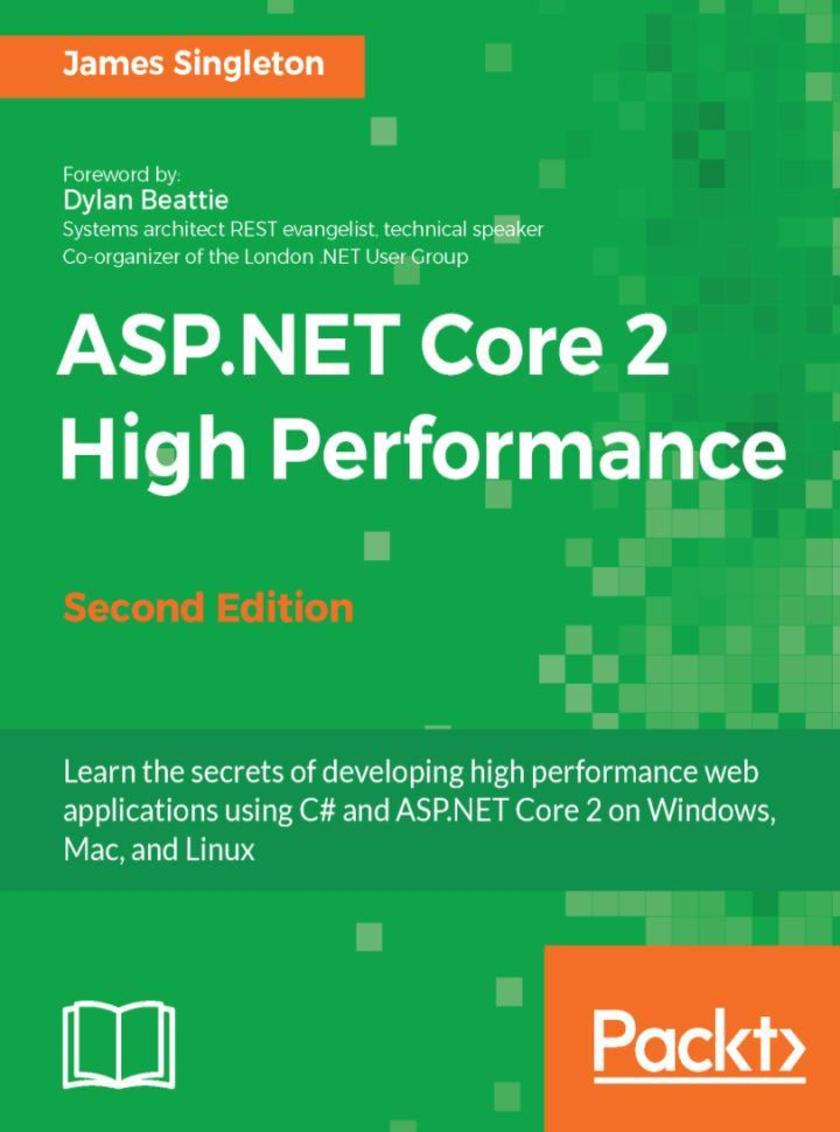
ASP.NET Core 2 High Performance - Second Edition
¥90.46
Learn how to develop web applications that deploy cross-platform and are optimized for high performance using ASP.NET Core 2 About This Book ? Master high-level web app performance improvement techniques using ASP.NET Core 2.0 ? Find the right balance between premature optimization and inefficient code ? Design workflows that run asynchronously and are resilient to transient performance issues Who This Book Is For This book is aimed for readers who can build a web application and have some experience with ASP.NET or some other web application framework (such as Ruby on Rails or Django). They can be people who are happy learning details independently but who struggle to discover the topics that they should be researching. The reader should be interested in improving the performance of their web app and in learning about ASP.NET Core and modern C#. What You Will Learn ? Understand ASP.NET Core 2 and how it differs from its predecessor ? Address performance issues at the early stages of development ? Set up development environments on Windows, Mac, and Linux ? Measure, profile and find the most significant problems ? Identify the differences between development workstations and production infrastructures, and how these can exacerbate problems ? Boost the performance of your application but with an eye to how it affects complexity and maintenance ? Explore a few cutting-edge techniques such as advanced hashing and custom transports In Detail The ASP.NET Core 2 framework is used to develop high-performance and cross-platform web applications. It is built on .NET Core 2 and includes significantly more framework APIs than version 1. This book addresses high-level performance improvement techniques. It starts by showing you how to locate and measure problems and then shows you how to solve some of the most common ones. Next, it shows you how to get started with ASP.NET Core 2 on Windows, Mac, Linux, and with Docker containers. The book illustrates what problems can occur as latency increases when deploying to a cloud infrastructure. It also shows you how to optimize C# code and choose the best data structures for the job. It covers new features in C# 6 and 7, along with parallel programming and distributed architectures. By the end of this book, you will be fixing latency issues and optimizing performance problems, but you will also know how this affects the complexity and maintenance of your application. Finally, we will explore a few highly advanced techniques for further optimization. Style and approach A step-by-step practical guide filled with real-world use cases and examples
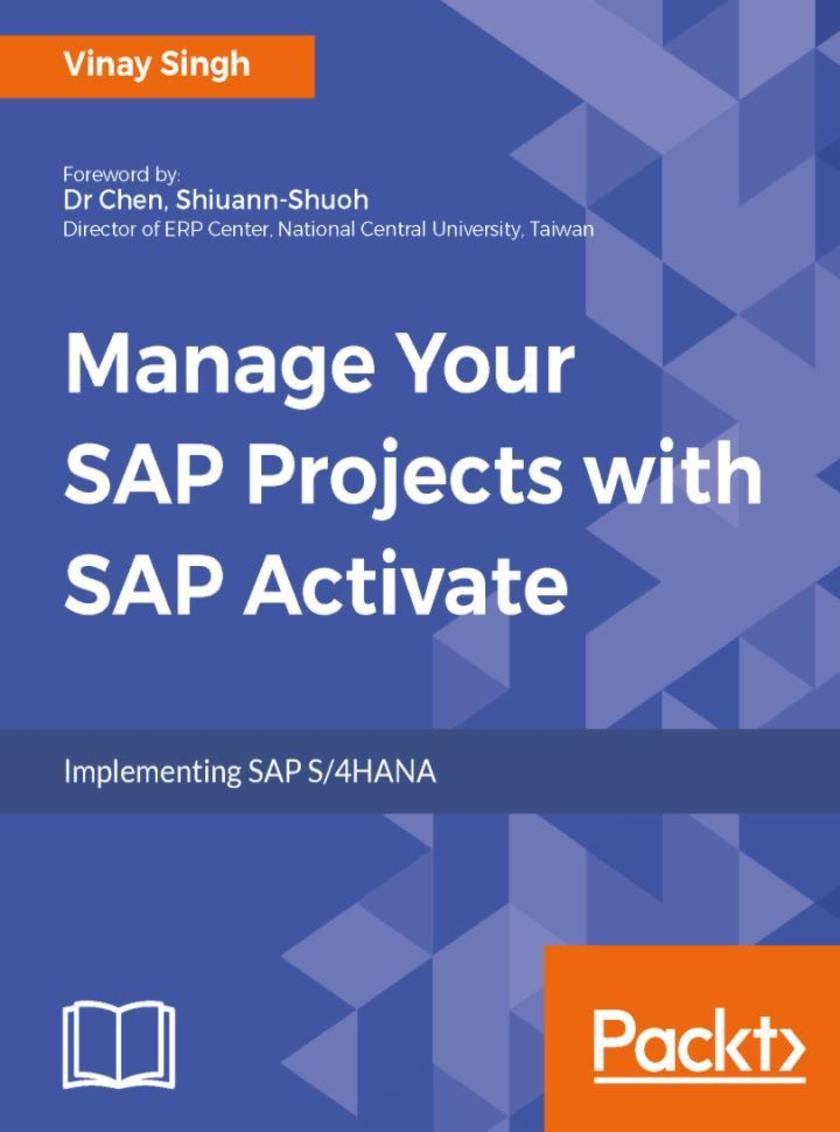
Manage Your SAP Projects With SAP Activate
¥71.93
Explore and use the agile techniques of SAP Activate Framework in your SAP Projects. About This Book ? Explore the three pillars of SAP Activate and see how it works in different scenario. ? Understand and Implement Agile and Scrum concepts in SAP Activate. ? Get to Grisp with SAP Activate framework and manage your SAP projects effectively. Who This Book Is For This book is for readers who want to understand the working of SAP Activate and use it to manage SAP projects. Prior knowledge of SAP Hana is must. What You Will Learn ? Understand the fundamentals of SAP S4/HANA. ? Get familiar with the structure and characteristics of SAP Activate. ? Explore the application scenarios of SAP Activate. ? Use Agile and Scrum in SAP Projects effectively and efficiently ? Implement your learning into a sample project to explore and understand the benefits of SAP Activate methodology. In Detail It has been a general observation that most SAP consultants and professionals are used to the conventional waterfall methodology. Traditionally, this method has been there for ages and we all grew up learning about it and started practicing it in real world. The evolution of agile methodology has revolutionized the way we manage our projects and businesses. SAP Activate is an innovative, next generation business suite that allows producing working deliverables straight away. Manage your SAP Project with SAP Activate, will take your learning to the next level. The book promises to make you understand and practice the SAP Activate Framework. The focus is to take you on a journey of all the phases of SAP Activate methodology and make you understand all the phases with real time project examples. The author explains how SAP Activate methodology can be used through real-world use cases, with a comprehensive discussion on Agile and Scrum, in the context of SAP Project. You will get familiar with SAP S4HANA which is an incredibly innovative platform for businesses which can store business data, interpret it, analyze it, process it in real time, and use it when it's needed depending upon the business requirement. Style and approach An easy to follow approach with concepts explained via scenarios and project examples
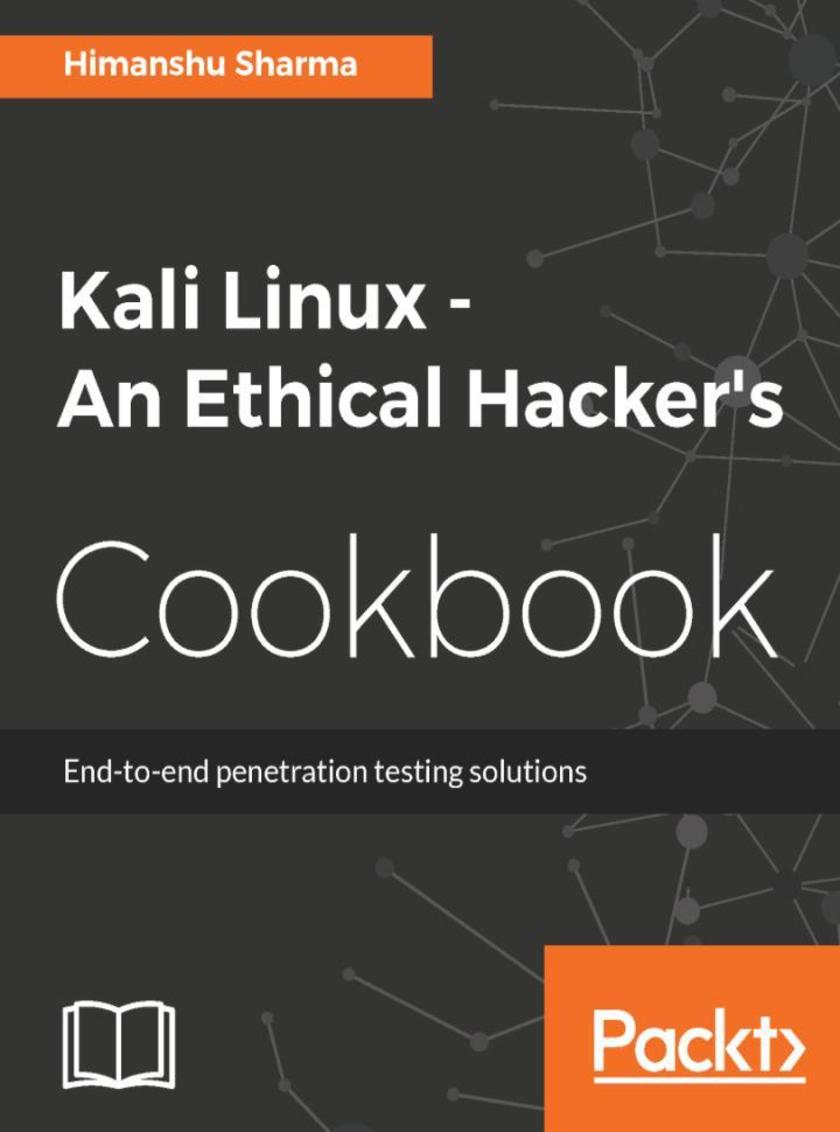
Kali Linux - An Ethical Hacker's Cookbook
¥80.65
Over 120 recipes to perform advanced penetration testing with Kali Linux About This Book ? Practical recipes to conduct effective penetration testing using the powerful Kali Linux ? Leverage tools like Metasploit, Wireshark, Nmap, and many more to detect vulnerabilities with ease ? Confidently perform networking and application attacks using task-oriented recipes Who This Book Is For This book is aimed at IT security professionals, pentesters, and security analysts who have basic knowledge of Kali Linux and want to conduct advanced penetration testing techniques. What You Will Learn ? Installing, setting up and customizing Kali for pentesting on multiple platforms ? Pentesting routers and embedded devices ? Bug hunting 2017 ? Pwning and escalating through corporate network ? Buffer over?ows 101 ? Auditing wireless networks ? Fiddling around with software-defned radio ? Hacking on the run with NetHunter ? Writing good quality reports In Detail With the current rate of hacking, it is very important to pentest your environment in order to ensure advanced-level security. This book is packed with practical recipes that will quickly get you started with Kali Linux (version 2016.2) according to your needs, and move on to core functionalities. This book will start with the installation and configuration of Kali Linux so that you can perform your tests. You will learn how to plan attack strategies and perform web application exploitation using tools such as Burp, and Jexboss. You will also learn how to perform network exploitation using Metasploit, Sparta, and Wireshark. Next, you will perform wireless and password attacks using tools such as Patator, John the Ripper, and airo*-ng. Lastly, you will learn how to create an optimum quality pentest report! By the end of this book, you will know how to conduct advanced penetration testing thanks to the book’s crisp and task-oriented recipes. Style and approach This is a recipe-based book that allows you to venture into some of the most cutting-edge practices and techniques to perform penetration testing with Kali Linux.
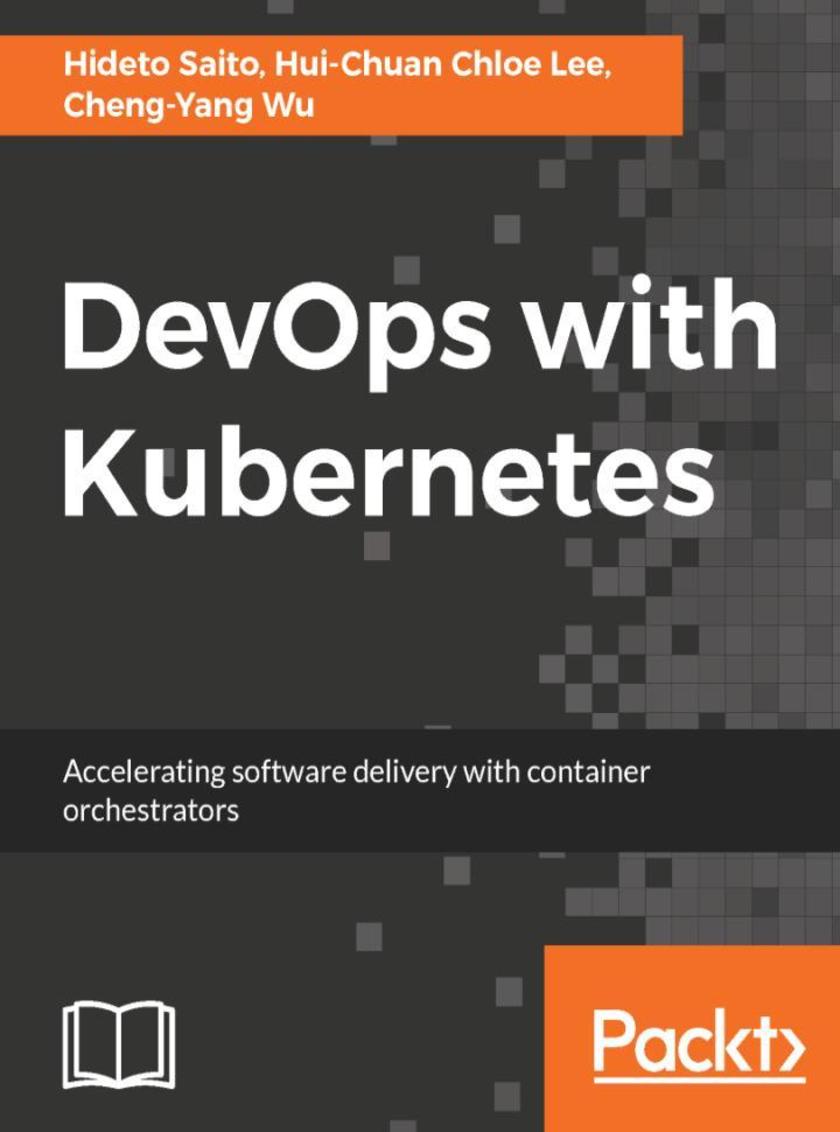
DevOps with Kubernetes
¥90.46
Learn to implement DevOps using Docker & Kubernetes. About This Book ? Learning DevOps, container, and Kubernetes within one book. ? Leverage Kubernetes as a platform to deploy, scale, and run containers efficiently. ? A practical guide towards container management and orchestration Who This Book Is For This book is targeted for anyone, who wants to learn containerization and clustering in a practical way using Kubernetes. No prerequisite skills required, however, essential DevOps skill and public/private Cloud knowledge will accelerate the reading speed. If you’re advanced readers, you can also get a deeper understanding of all the tools and technique described in the book. What You Will Learn ? Learn fundamental and advanced DevOps skills and tools ? Get a comprehensive understanding for container ? Learn how to move your application to container world ? Learn how to manipulate your application by Kubernetes ? Learn how to work with Kubernetes in popular public cloud ? Improve time to market with Kubernetes and Continuous Delivery ? Learn how to monitor, log, and troubleshoot your application with Kubernetes In Detail Containerization is said to be the best way to implement DevOps. Google developed Kubernetes, which orchestrates containers efficiently and is considered the frontrunner in container orchestration. Kubernetes is an orchestrator that creates and manages your containers on clusters of servers. This book will guide you from simply deploying a container to administrate a Kubernetes cluster, and then you will learn how to do monitoring, logging, and continuous deployment in DevOps. The initial stages of the book will introduce the fundamental DevOps and the concept of containers. It will move on to how to containerize applications and deploy them into. The book will then introduce networks in Kubernetes. We then move on to advanced DevOps skills such as monitoring, logging, and continuous deployment in Kubernetes. It will proceed to introduce permission control for Kubernetes resources via attribute-based access control and role-based access control. The final stage of the book will cover deploying and managing your container clusters on the popular public cloud Amazon Web Services and Google Cloud Platform. At the end of the book, other orchestration frameworks, such as Docker Swarm mode, Amazon ECS, and Apache Mesos will be discussed. Style and approach Readers will be taken through fundamental DevOps skills and Kubernetes concept and administration with detailed examples. It introduces comprehensive DevOps topics, including microservices, automation tools, containers, monitoring, logging, continuous delivery, and popular public cloud environments. At each step readers will learn how to leverage Kubernetes in their everyday lives and transform their original delivery pipeline for fast and efficient delivery.
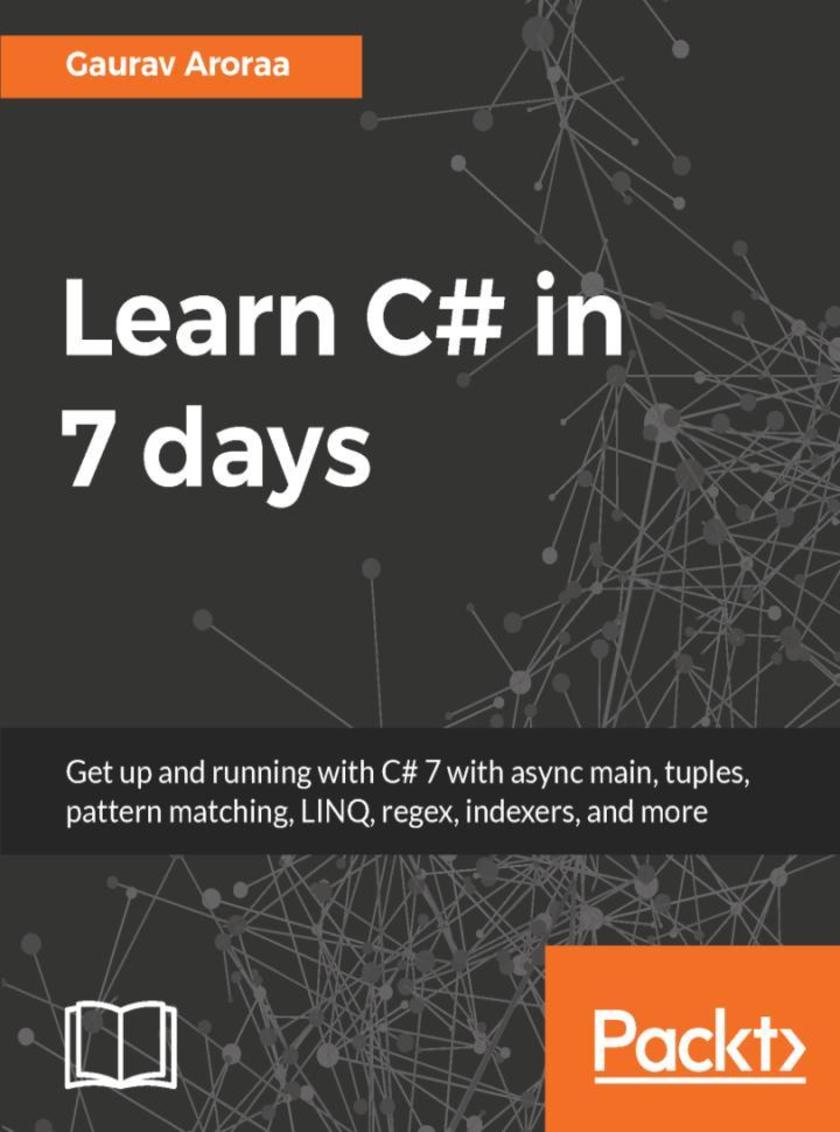
Learn C# in 7 days
¥71.93
Learn C# in 7 days with practical examples, build a foundation for C# programming, and boost your skills to an advanced level About This Book ? Learn the basics of C# in 7 days ? Works as a reference guide describing the major features of C# ? Build easy and simple code through real-world example scenarios Who This Book Is For The book is for aspiring developers and absolute novices who want to get started with the world of programming. You do not need any knowledge of C# for this book. What You Will Learn ? Understand and set up the .NET environment ? Code in C# using the Visual Studio 2017 RC (preferable community edition) IDE ? Define variables, syntax, control flows, statements, and arrays etc through examples ? Understand the concepts of Object-Oriented Programming using C# ? Get acquainted with attributes, collection, generics, and LINQ ? Get your hands on class members such as Modifiers, Methods, Properties, Indexers, File I/O, Exception Handling, and Regex ? Build a real-world application using C# 7 In Detail This book takes a unique approach to teach C# to absolute beginners. You’ll learn the basics of the language in seven days. It takes a practical approach to explain the important concepts that build the foundation of the C# programming language. The book begins by teaching you the basic fundamentals using real-world practical examples and gets you acquainted with C# programming. We cover some important features and nuances of the language in a hands-on way, helping you grasp the concepts in a fluid manner. Later, you’ll explore the concepts of Object-Oriented Programming (OOP) through a real-world example. Then we dive into advanced-level concepts such as generics and collections, and you’ll get acquainted with objects and LINQ. Towards the end, you’ll build an application that covers all the concepts explained in the book. By the end of this book, you will have next-level skills and a good knowledge of the fundamentals of C#. Style and approach Fast paced guide to get you up-to-speed with the language. Every chapter is followed by an exercise that focuses on building something with the language. The codes of the exercises can be found on the Packt website
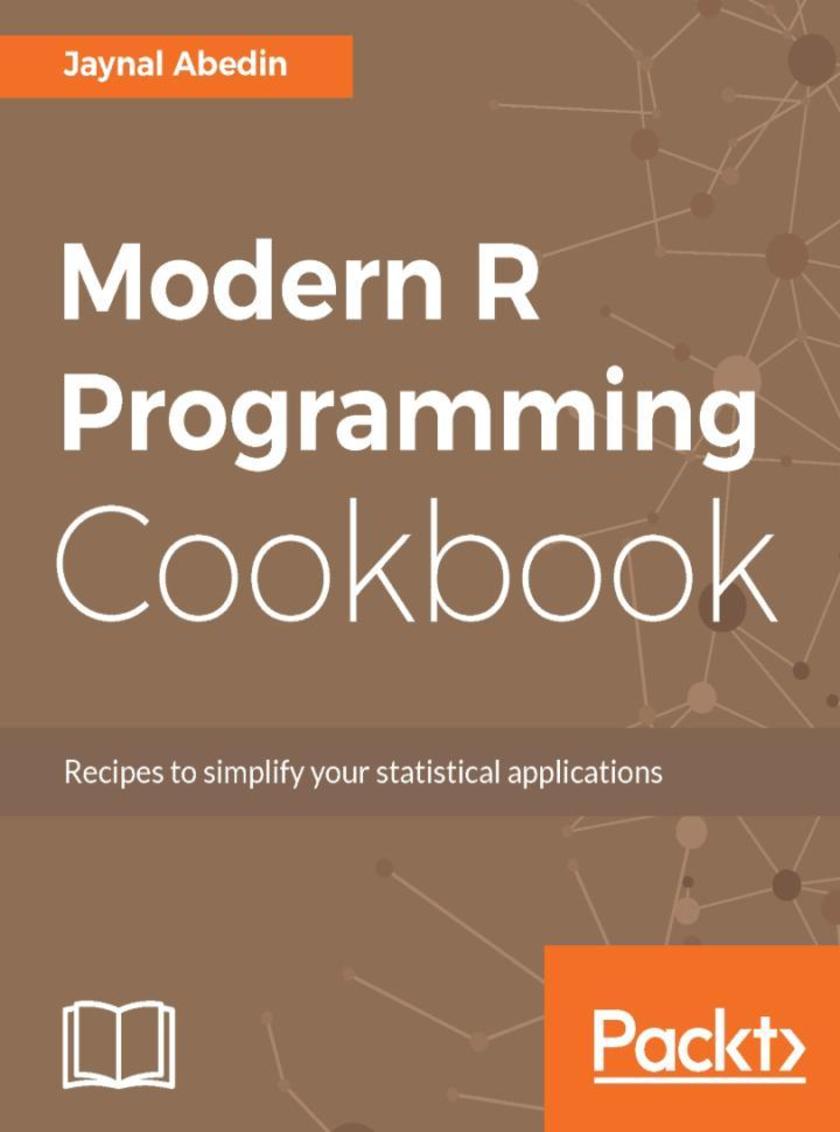
Modern R Programming Cookbook
¥80.65
Recipes for emerging developers in R programming and data scientists to simplify their R programming capabilities About This Book ? Develop strategies to speed up your R code ? Tackle programming problems and explore both functional and object-oriented programming techniques ? Learn how to address the core problems of programming in R with the most popular R packages for common tasks Who This Book Is For This book is for developers who would like to enhance the R programming skills. Basic knowledge of R programming is assumed. What You Will Learn ? Install R and its various IDE for a given platform along with installing libraries from different repositories and version control ? Learn about basic data structures in R and how to work with them ? Write customized R functions and handle recursions, exceptions in R environments ? Create the data processing task as a step by step computer program and execute using dplyr ? Extract and process unstructured text data ? Interact with database management system to develop statistical applications ? Formulate and implement parallel processing in R In Detail R is a powerful tool for statistics, graphics, and statistical programming. It is used by tens of thousands of people daily to perform serious statistical analyses. It is a free, open source system whose implementation is the collective accomplishment of many intelligent, hard-working people. There are more than 2,000 available add-ons, and R is a serious rival to all commercial statistical packages. The objective of this book is to show how to work with different programming aspects of R. The emerging R developers and data science could have very good programming knowledge but might have limited understanding about R syntax and semantics. Our book will be a platform develop practical solution out of real world problem in scalable fashion and with very good understanding. You will work with various versions of R libraries that are essential for scalable data science solutions. You will learn to work with Input / Output issues when working with relatively larger dataset. At the end of this book readers will also learn how to work with databases from within R and also what and how meta programming helps in developing applications. Style and approach This book will be a companion for R programmer and emerging developers in R programming areas. This book will contain recipes related to advanced R programming which will enable users to solve complex problems efficiently.
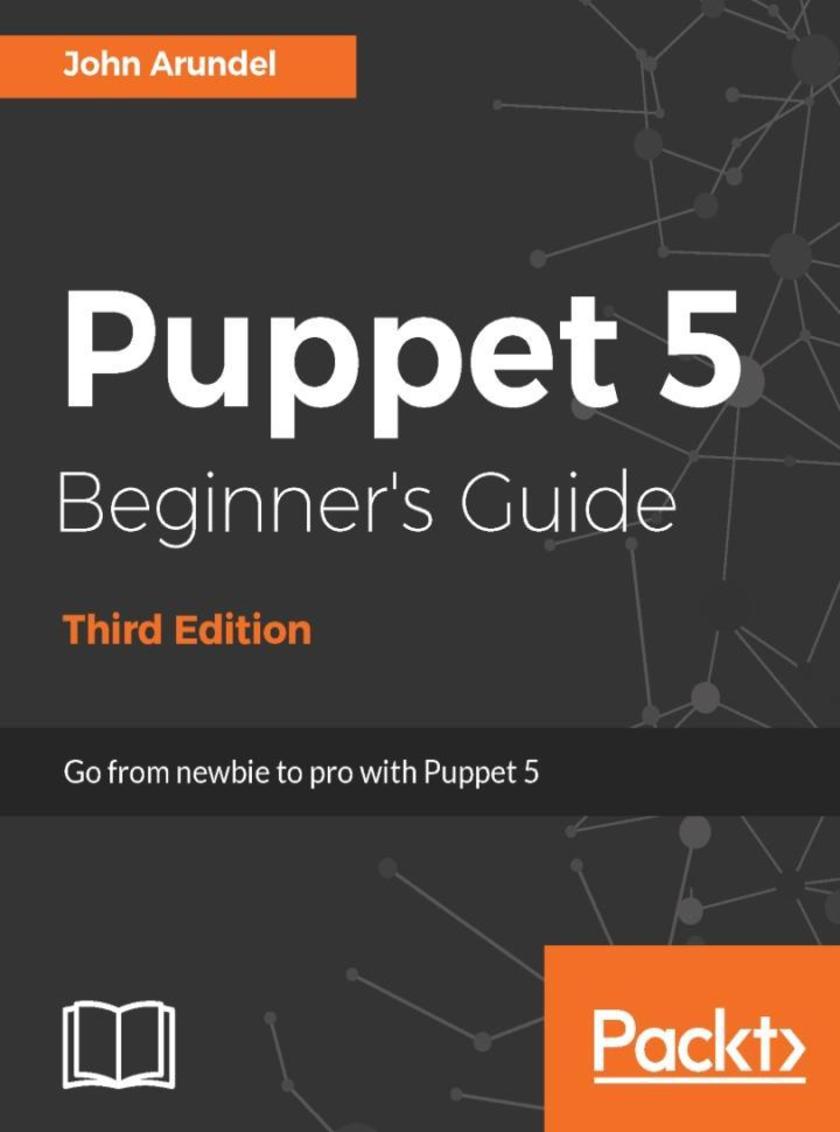
Puppet 5 Beginner's Guide - Third Edition
¥71.93
Puppet 5 Beginner’s Guide, Third Edition is a practical guide that gets you up and running with the very latest features of Puppet 5. About This Book ? Develop skills to run Puppet 5 on single or multiple servers without hiccups ? Use Puppet to create and manage cloud resources such as Amazon EC2 instances ? Take full advantage of powerful new features of Puppet including loops, data types, Hiera integration, and container management Who This Book Is For Puppet 5 Beginner’s Guide, Third Edition is designed for those who are new to Puppet, including system administrators and developers who are looking to manage computer server systems for configuration management. No prior programming or system administration experience is assumed. What You Will Learn ? Understand the latest Puppet 5 features ? Install and set up Puppet and discover the latest and most advanced features ? Configure, build, and run containers in production using Puppet’s industry-leading Docker support ? Deploy configuration files and templates at super-fast speeds and manage user accounts and access control ? Automate your IT infrastructure ? Use the latest features in Puppet 5 onward and its official modules ? Manage clouds, containers, and orchestration ? Get to know the best practices to make Puppet more reliable and increase its performance In Detail Puppet 5 Beginner’s Guide, Third Edition gets you up and running with the very latest features of Puppet 5, including Docker containers, Hiera data, and Amazon AWS cloud orchestration. Go from beginner to confident Puppet user with a series of clear, practical examples to help you manage every aspect of your server setup. Whether you’re a developer, a system administrator, or you are simply curious about Puppet, you’ll learn Puppet skills that you can put into practice right away. With practical steps giving you the key concepts you need, this book teaches you how to install packages and config files, create users, set up scheduled jobs, provision cloud instances, build containers, and so much more. Every example in this book deals with something real and practical that you’re likely to need in your work, and you’ll see the complete Puppet code that makes it happen, along with step-by-step instructions for what to type and what output you’ll see. All the examples are available in a GitHub repo for you to download and adapt for your own server setup. Style and approach This tutorial is packed with quick step-by-step instructions that are immediately applicable for beginners. This is an easy-to-read guide, to learn Puppet from scratch, that explains simply and clearly all you need to know to use this essential IT power tool, while applying these solutions to real-world scenarios.
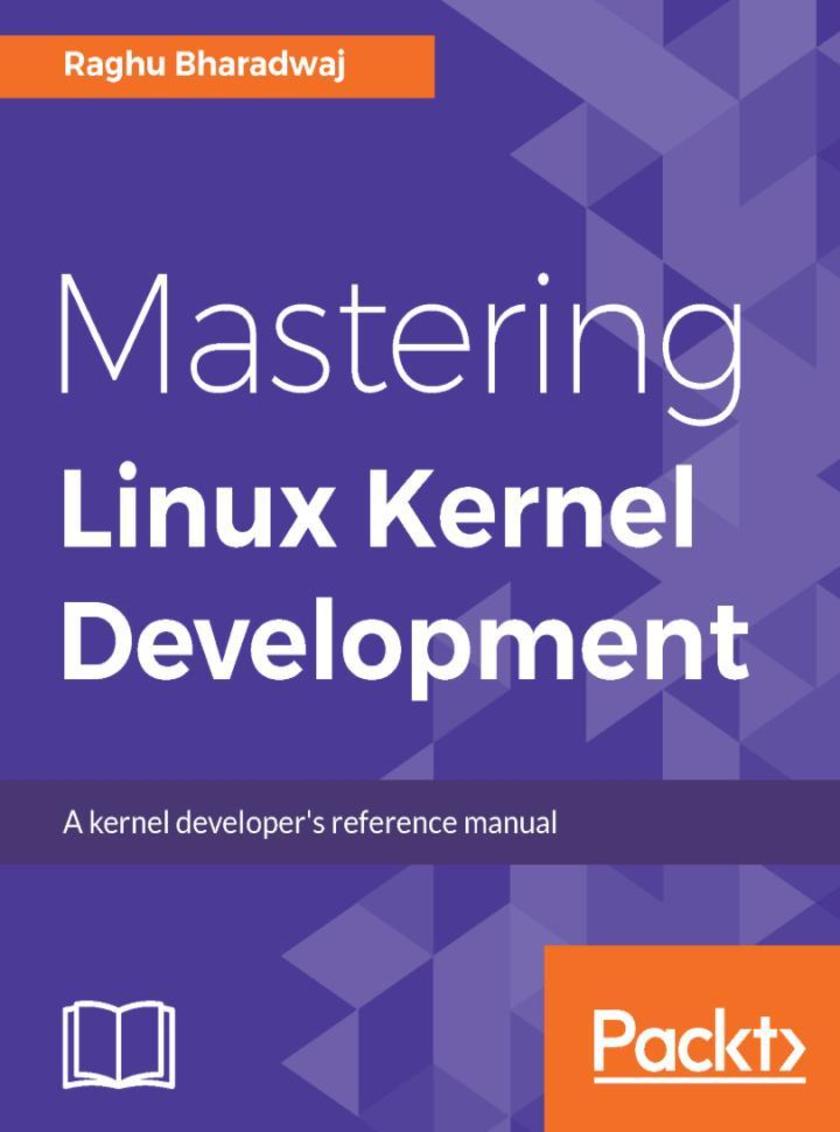
Mastering Linux Kernel Development
¥90.46
Explore Implementation of core kernel subsystems About This Book ? Master the design, components, and structures of core kernel subsystems ? Explore kernel programming interfaces and related algorithms under the hood ? Completely updated material for the 4.12.10 kernel Who This Book Is For If you are a kernel programmer with a knowledge of kernel APIs and are looking to build a comprehensive understanding, and eager to explore the implementation, of kernel subsystems, this book is for you. It sets out to unravel the underlying details of kernel APIs and data structures, piercing through the complex kernel layers and gives you the edge you need to take your skills to the next level. What You Will Learn ? Comprehend processes and fles—the core abstraction mechanisms of the Linux kernel that promote effective simplification and dynamism ? Decipher process scheduling and understand effective capacity utilization under general and real-time dispositions ? Simplify and learn more about process communication techniques through signals and IPC mechanisms ? Capture the rudiments of memory by grasping the key concepts and principles of physical and virtual memory management ? Take a sharp and precise look at all the key aspects of interrupt management and the clock subsystem ? Understand concurrent execution on SMP platforms through kernel synchronization and locking techniques In Detail Mastering Linux Kernel Development looks at the Linux kernel, its internal arrangement and design, and various core subsystems, helping you to gain significant understanding of this open source marvel. You will look at how the Linux kernel, which possesses a kind of collective intelligence thanks to its scores of contributors, remains so elegant owing to its great design. This book also looks at all the key kernel code, core data structures, functions, and macros, giving you a comprehensive foundation of the implementation details of the kernel’s core services and mechanisms. You will also look at the Linux kernel as well-designed software, which gives us insights into software design in general that are easily scalable yet fundamentally strong and safe. By the end of this book, you will have considerable understanding of and appreciation for the Linux kernel. Style and approach Each chapter begins with the basic conceptual know-how for a subsystem and extends into the details of its implementation. We use appropriate code excerpts of critical routines and data structures for subsystems.

Building Business Websites with Squarespace 7 - Second Edition
¥80.65
Discover the best way to build, design and launch professional websites with Squarespace quickly, without needing to learn any code About This Book ? Discover time-saving tricks and best practices, and avoid common pitfalls while creating a website ? Create visually stunning Responsive Design templates for your website with Squarespace 7 ? Understand how to monitor, measure, and manage your website after launching it Who This Book Is For This book is ideal for anyone who wants to learn how to use the latest version of Squarespace to create a website from scratch and take it through to go-live. You don't need any prior experience with Squarespace, HTML, or CSS, or building websites in general as everything is done using Squarespace's simple, browser-based interface. What You Will Learn ? Develop an essential Website Toolkit that will act as reference and materials for your entire project, ensuring you stay on-target to meet your objectives ? Set up your Squarespace account, learn how the interface works, and select the correct template for your website's purpose and goals ? Create your website framework, fill it with content, and arrange your pages using Squarespace's easy drag-and-drop tools ? Customize your site's look and feel to match your brand, and create a stunning visual impact for your website on all types of devices, including mobiles and tablets ? Configure the core functions your business needs, whether connecting to social media, promoting events, showcasing your work, or selling goods and services online ? Learn time-saving tricks and how to avoid common pitfalls from an experienced professional with years of Squarespace experience ? Gain valuable insights about search engine optimization, communicating effectively online, and other e-marketing advice ? How to monitor, measure, and manage your website post-launch In Detail Squarespace is a web-based tool that allows non-technical people to create and manage professional-looking websites quickly, without needing to write any code. It empowers business owners to take total control of their own websites, without needing to pay someone to design or maintain it. This book covers much more than just how to use Squarespace. It covers all aspects of creating a successful business website, from developing your brand identity, to writing and structuring content to match your target audience's needs, and dozens of other other valuable tips that will help your website shine. Most importantly, you'll learn the correct steps to follow in order to ensure your project is smooth and stress-free. The book starts by helping you plan your website project and gather all the raw materials you'll need. Next, you'll set up your account and become familiar with the terminology and tools that you'll be using. Once you've learned the basics of how the Squarespace interface, templates, and different page types operate, you will create the framework of your website, ready for you to insert content and functionality. Then, once all the core elements are in place, you'll apply the aesthetic fine-tuning needed to bring your website in line with your brand. After the aesthetics have been honed and all functions tested, you will launch your website and drive traffic to it, monitor it, and improve it. Style and approach This easy-to-follow guide will teach you to build websites the easiest way in the latest version of Squarespace.
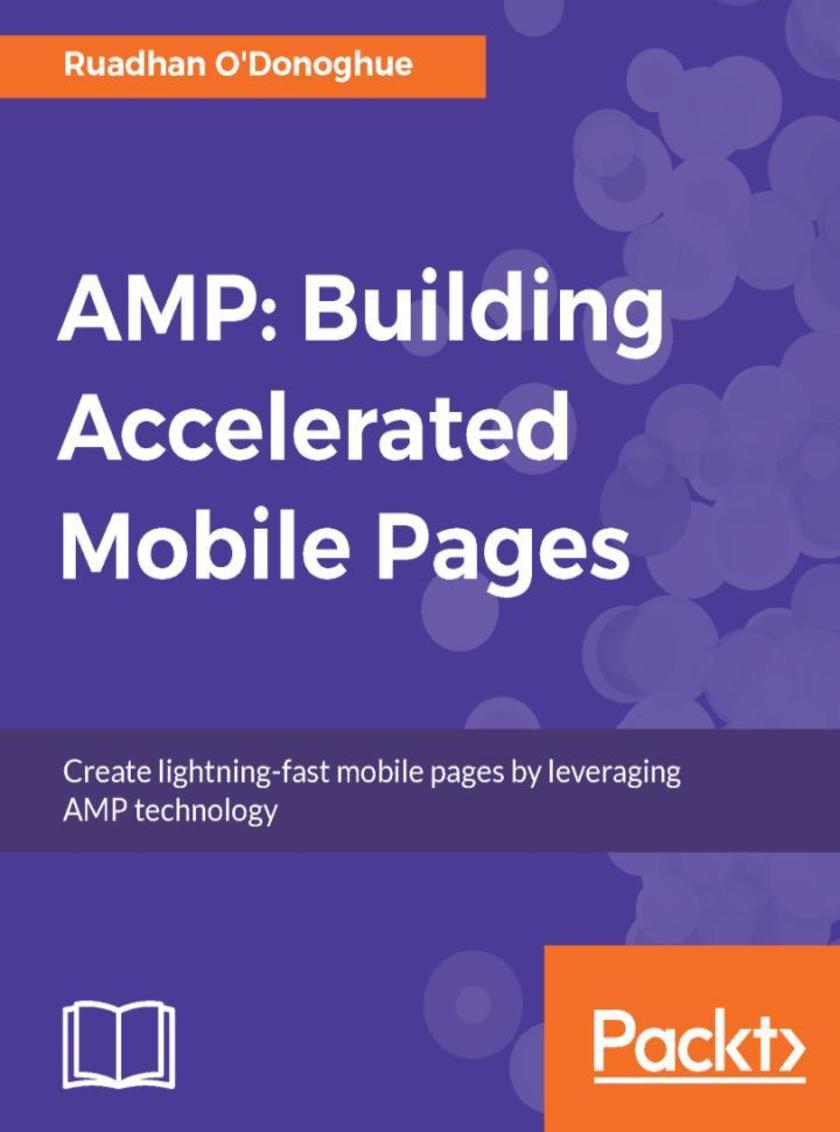
AMP: Building Accelerated Mobile Pages
¥80.65
Engineer naturally lean web pages and leverage the latest web platform features to dramatically boost page speed About This Book ? The first book for web developers that shows how to put AMP to work ? Improve your website's mobile experience and get more traffic ? Practical methods to achieve a step change in performance quickly and easily Who This Book Is For This book is for experienced web developers who are aware of the impact of slow-loading web pages on conversion rates and user engagement, and who are seeking to serve content to their end users in a rich and enticing way using the Accelerated Mobile Pages framework. You should be familiar with HTML5, CSS3, JavaScript, and JSON. What You Will Learn ? Build, validate, and deploy AMP pages ? Create interactive user notifications, navigation menus, accordions, contact pages with forms and maps ? Monetize your traffic with a variety of ad styles and providers ? Analyze your traffic by integrating analytics providers and tracking user-behavior along several dimensions ? Embed social media with amp-youtube, amp-instagram, amp-twitter, and amp-facebook ? Build e-commerce functionality including product pages and shopping carts ? Deliver rich media experiences using AMP custom elements ? Use advanced deployment techniques to extend functionality ? Install ServiceWorkers and build Progressive Web Apps for offline use In Detail Google introduced the Accelerated Mobile Pages (AMP) project to give mobile users lightning-fast response times when accessing web pages on mobile devices. AMP delivers great user experiences by providing a framework for optimizing web pages that otherwise would take much longer to load on a mobile platform. This book shows how to solve page performance issues using the mobile web technologies available today. You will learn how to build instant-loading web pages, and have them featured more prominently on Google searches. If you want your website to succeed on mobile, if you care about SEO, and if you want to stay competitive, then this book is for you! You will go on a mobile web development journey that demonstrates with concrete examples how to build lightning-fast pages that will keep your visitors on-site and happy. This journey begins by showing how to build a simple blog article-style web page using AMP. As new concepts are introduced this page is gradually refined until you will have the skills and confidence to build a variety of rich and interactive mobile web pages. These will include e-commerce product pages, interactive forms and menus, maps and commenting systems, and even Progressive Web Apps. Style and approach Get step-by-step instructions to build web pages of different types, gain expert tricks to brand your pages without bloating them, and see methods to embed advertising.
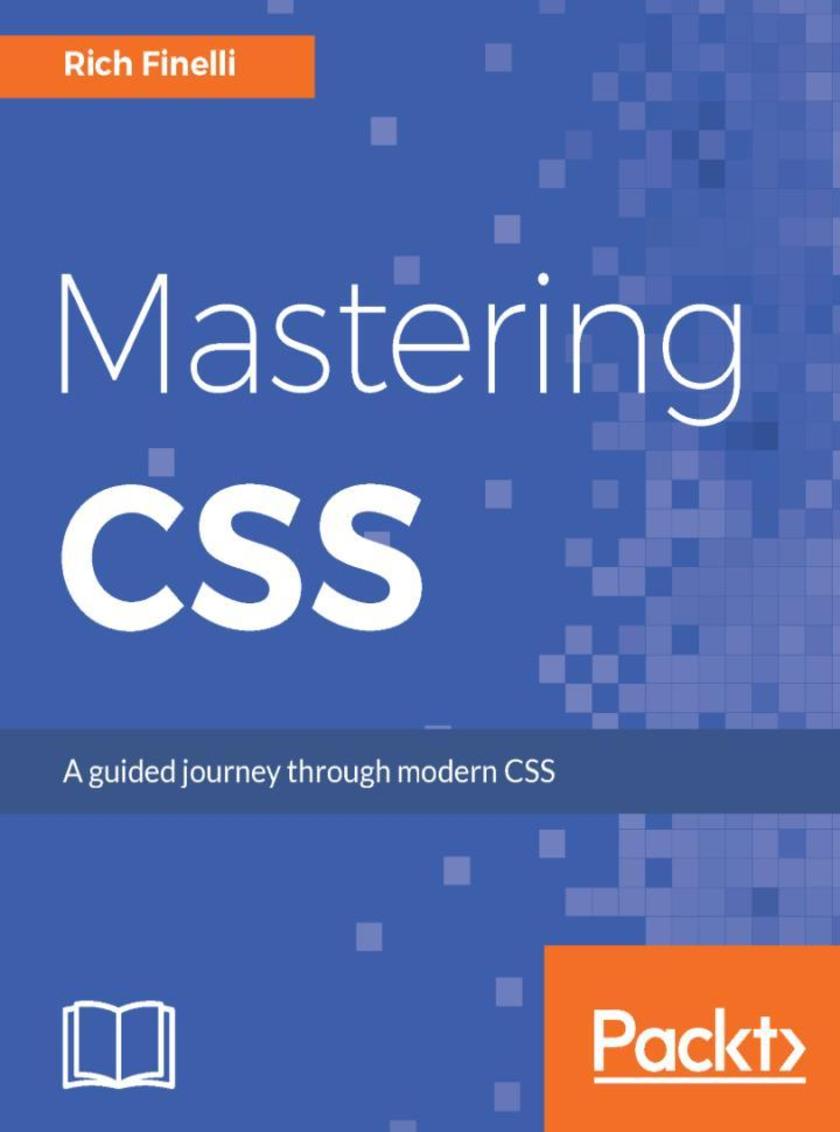
Mastering CSS
¥71.93
Rich Finelli's modern CSS training course, based on his bestselling Mastering CSS video, now available in a book. Master CSS from best practices to practical CSS coding. About This Book ? Learn CSS directly from Rich Finelli, author of the bestselling Mastering CSS training course ? From best practices to deep coding, Rich Finelli shares his CSS knowledge with you ? Rich Finelli covers the latest CSS updates with flexbox and works with retina devices Who This Book Is For This book is for web designers who wish to master the best practices of CSS in their web projects. You already know how to work with a web page, and want to use CSS to master website presentation. What You Will Learn ? Master fundamental CSS concepts like the anatomy of a rule set, the box model, and the differences between block and inline elements ? Employ flexbox to layout and align elements simply and cleanly ? Become proficient with CSS3 properties such as transitions, transforms, gradients, and animations ? Delve into modular, reusable, and scalable CSS for more organized and maintainable style sheets ? Understand media queries and other pillars of responsive web design ? Get creative with the @font-face property, Google Web Fonts, font services such as Typekit, as well as, icon fonts ? Understand the workflow for HiDPI (retina) devices using 2x images, SVG, and the srcset attribute In Detail Rich Finelli trains you in CSS deep learning and shows you the techniques you need to work in the world of responsive, feature-rich web applications. Based on his bestselling Mastering CSS training video, you can now learn with Rich in this book! Rich shares with you his skills in creating advanced layouts, and the critical CSS insights you need for responsive web designs, fonts, transitions, animations, and using flexbox. Rich begins your CSS training with a review of CSS best practices, such as using a good text editor to automate your authoring and setting up a CSS baseline. You then move on to create a responsive layout making use of floats and stylable drop-down menus, with Rich guiding you toward a modular-organized approach to CSS. Your training with Rich Finelli then dives into detail about working with CSS and the best solutions to make your websites work. You'll go with him into CSS3 properties, transforms, transitions, and animations. You’ll gain his understanding of responsive web designs, web fonts, icon fonts, and the techniques used to support retina devices. Rich expands your knowledge of CSS so you can master one of the most valuable tools in modern web design. Style and approach Let Rich Finelli train you in CSS! This book has a direct training style because it is based on Rich's bestselling Mastering CSS training course.

MongoDB Administrator’s Guide
¥71.93
Manage, fine-tune, secure and deploy your MongoDB solution with ease with the help of practical recipes About This Book ? Configure and deploy your MongoDB instance securely, without any hassle ? Optimize your database's query performance, perform scale-out operations, and make your database highly available ? Practical guide with a recipe-based approach to help you tackle any problem in the application and database administration aspects of MongoDB Who This Book Is For Database administrators with a basic understanding of the features of MongoDB and who want to professionally configure, deploy, and administer a MongoDB database, will find this book essential. If you are a MongoDB developer and want to get into MongoDB administration, this book will also help you. What You Will Learn ? Install and deploy MongoDB in production ? Manage and implement optimal indexes ? Optimize monitoring in MongoDB ? Fine-tune the performance of your queries ? Debug and diagnose your database's performance ? Optimize database backups and recovery and ensure high availability ? Make your MongoDB instance scalable ? Implement security and user authentication features in MongoDB ? Master optimal cloud deployment strategies In Detail MongoDB is a high-performance and feature-rich NoSQL database that forms the backbone of the systems that power many different organizations. Packed with many features that have become essential for many different types of software professional and incredibly easy to use, this cookbook contains more than 100 recipes to address the everyday challenges of working with MongoDB. Starting with database configuration, you will understand the indexing aspects of MongoDB. The book also includes practical recipes on how you can optimize your database query performance, perform diagnostics, and query debugging. You will also learn how to implement the core administration tasks required for high-availability and scalability, achieved through replica sets and sharding, respectively. You will also implement server security concepts such as authentication, user management, role-based access models, and TLS configuration. You will also learn how to back up and recover your database efficiently and monitor server performance. By the end of this book, you will have all the information you need—along with tips, tricks, and best practices—to implement a high-performance MongoDB solution. Style and approach This practical book follows a problem-solution approach to help you tackle any issues encountered while performing MongoDB administrative tasks. Each recipe is detailed, and explained in a very easy to understand manner
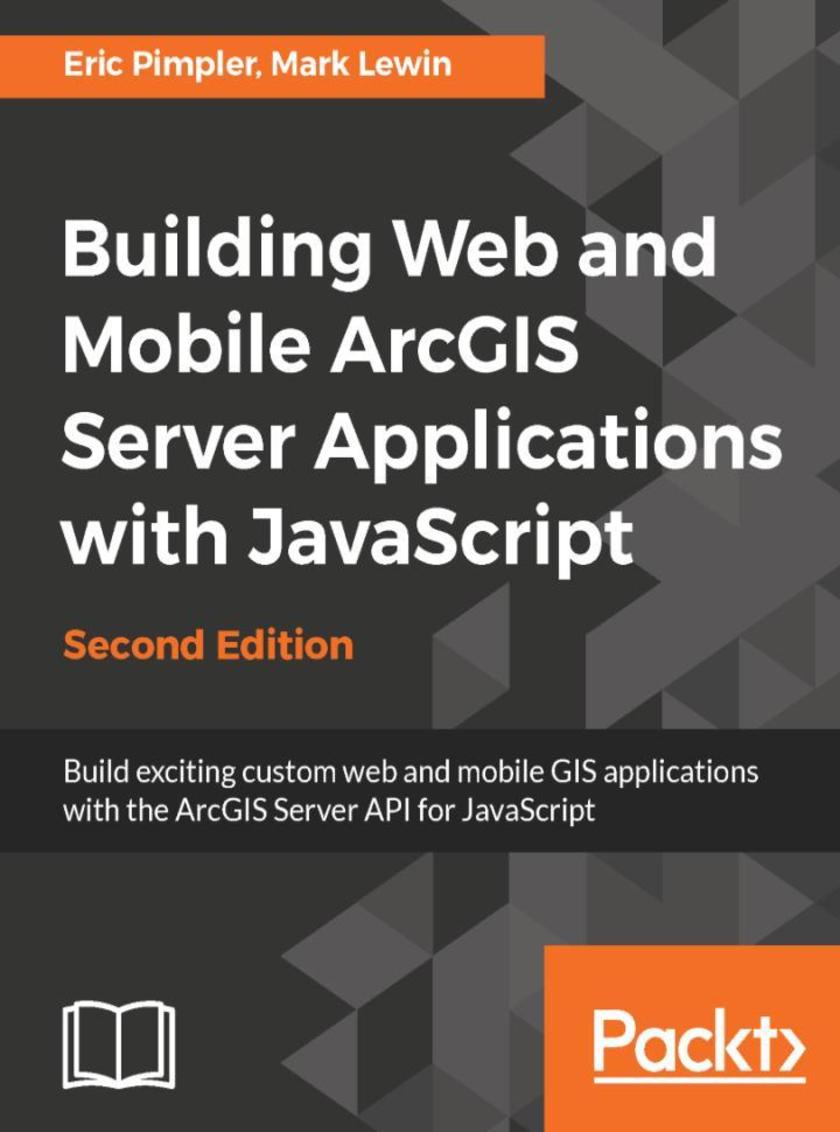
Building Web and Mobile ArcGIS Server Applications with JavaScript - Second Edit
¥90.46
Master the ArcGIS API for JavaScript to build web and mobile applications using this practical guide. About This Book ? Develop ArcGIS Server applications with JavaScript, both for traditional web browsers as well as the mobile platform ? Make your maps informative with intuitive geographic layers, user interface widgets, and more ? Integrate ArcGIS content into your custom applications and perform analytics with the ArcGIS Online Who This Book Is For If you are a web or mobile application developer, who wants to create GIS applications in your respective platform, this book is ideal for you. You will need Java Script programming experience to get the most out of this book. Although designed as an introductory to intermediate level book, it will also be useful for more advanced developers who are new to the topic of developing applications with ArcGIS Server. What You Will Learn ? To create an application with the ArcGIS API for JavaScript ? Build and display a broad range of different geometry types to represent features on the map ? The best way to leverage a feature layer and display related attribute data ? The functionality of the wide range of widgets and how to use them effectively ? Query data to gain new insights into the information it contains ? Work with tasks to discover and locate features on the map ? Using the geocoder and associated widgets ? The ability of the API to provide turn by turn directions and routing capabilities ? How to use the Geometry Engine and Geometry Service tasks for common geoprocessing operations ? Integrate content on ArcGIS online and add it to your custom web mapping application In Detail The ArcGIS API for JavaScript enables you to quickly build web and mobile mapping applications that include sophisticated GIS capabilities, yet are easy and intuitive for the user. Aimed at both new and experienced web developers, this practical guide gives you everything you need to get started with the API. After a brief introduction to HTML/CSS/JavaScript, you'll embed maps in a web page, add the tiled, dynamic, and streaming data layers that your users will interact with, and mark up the map with graphics. You will learn how to quickly incorporate a broad range of useful user interface elements and GIS functionality to your application with minimal effort using prebuilt widgets. As the book progresses, you will discover and use the task framework to query layers with spatial and attribute criteria, search for and identify features on the map, geocode addresses, perform network analysis and routing, and add custom geoprocessing operations. Along the way, we cover exciting new features such as the client-side geometry engine, learn how to integrate content from ArcGIS.com, and use your new skills to build mobile web mapping applications. We conclude with a look at version 4 of the ArcGIS API for JavaScript (which is being developed in parallel with version 3.x) and what it means for you as a developer. Style and approach Readers will be taken through a series of exercises that will demonstrate how to efficiently build ArcGIS Server applications for the mobile and web.




 购物车
购物车 个人中心
个人中心



